How to restring an electric guitar
Our easy step-by-step guide to changing the strings on your electric guitar – with pictures
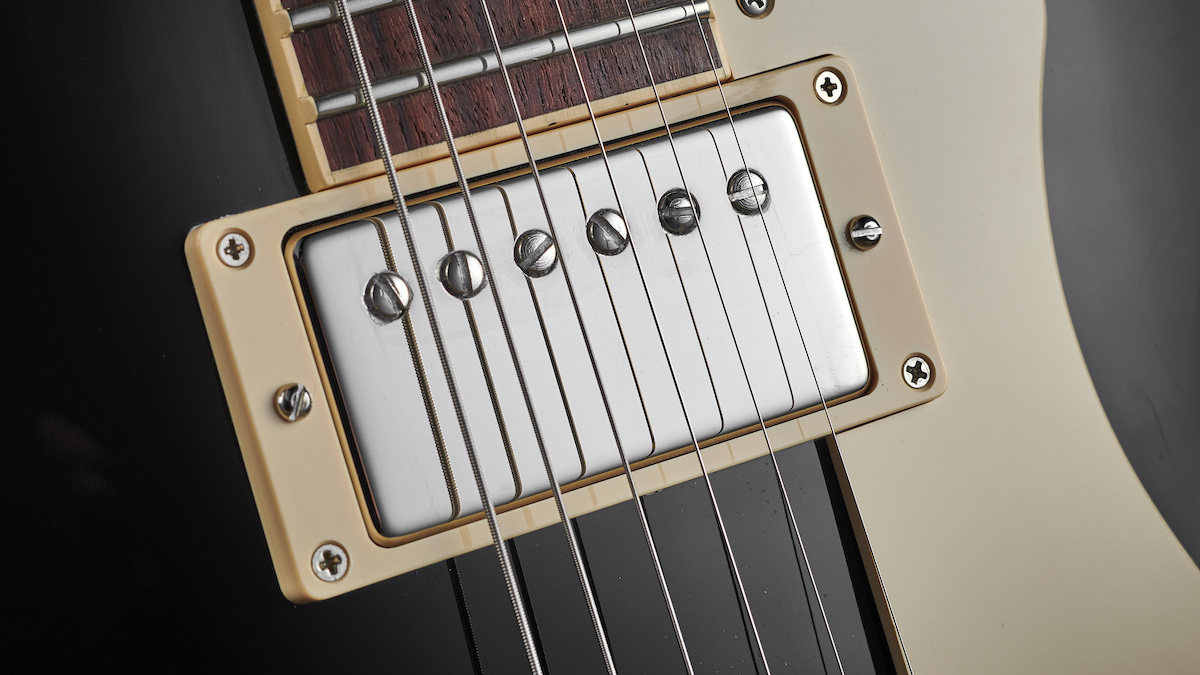
Changing your electric guitar strings is one of the cheapest and easiest ways to breathe new life into your instrument. A new set of strings will entice new definition from your guitar and it’ll feel and play better too. But how do you know when it’s time for new strings on your electric? And if you’ve never changed strings before, what’s the process and what tools do you need?
This guide will show you step-by-step exactly how to restring your electric guitar. In this example we’re going to show you how to fit new strings to an electric guitar that also features a Floyd Rose tremolo, but we've included info on how to complete the steps with a non-Floyd setup too.
Got an acoustic guitar that needs the same treatment? Read our guide covering how to restring an acoustic guitar or how to restring a classical guitar. Our guide to restringing a bass guitar is for all you low-end merchants.
Why should you change your acoustic guitar strings?
So, why have new strings then? Old strings no longer perform as they should for a start; they get corroded with sweat and other dirt and turn a different color. This grime makes them sound duller. Worn out strings also can become deformed, most obviously on the wound strings where they get dented at the point where they press onto the frets.
The crud build up on old strings can even make them play out of tune! When the mass of the string changes it does not intonate as it should, which means the higher up the fretboard you play, the more out of tune it will be.
Something else worth considering is that leaving old strings on can also pollute your guitar case, particularly the fur-lined types. If the case gets dirty then even new strings will be stored in grimy fur, yuck!
What you’ll need

To restring your electric guitar you’ll need a fresh set of strings (obvs), a string winder to save time, some sturdy wire cutters and a guitar tuner. Restringing a Floyd Rose equipped electric guitar will additionally call for a 3mm hex key and a slim wooden stick to prop up the tremolo. We’d advise replacing the strings with the same gauge again otherwise you’ll have to reset the tremolo tension.
Get The Pick Newsletter
All the latest guitar news, interviews, lessons, reviews, deals and more, direct to your inbox!
How to restring an electric guitar: Step-by-step

1. Slacken off the old strings
When tackling an electric guitar with a Floyd Rose locking tremolo system, first up you need to release the strings; take a 3mm allen wrench and loosen off the string clamps at the nut. Remove them completely and store safely. As the bridge can move in either direction we need to hold it steady while we’re working on it. Just letting the strings off will make the bridge drop into the body and on some guitars the springs are a bit iffy and won’t return correctly. Pop a lollipop stick or a piece of soft timber under the bridge to hold it up. Drop the pitch of the strings and loosen the string clamp blocks off at the bridge with your allen key again, the string will pull out.
If you don’t have a Floyd Rose or tremolo system, simply slacken off the old strings using the machine heads. You can speed up this process with a manual string winder or even a motorised one if you’re really impatient. Once they’re loose you can cut the strings with a pair of quality wire cutters – scissors will not hack it, unless you’re happy to blunt them.
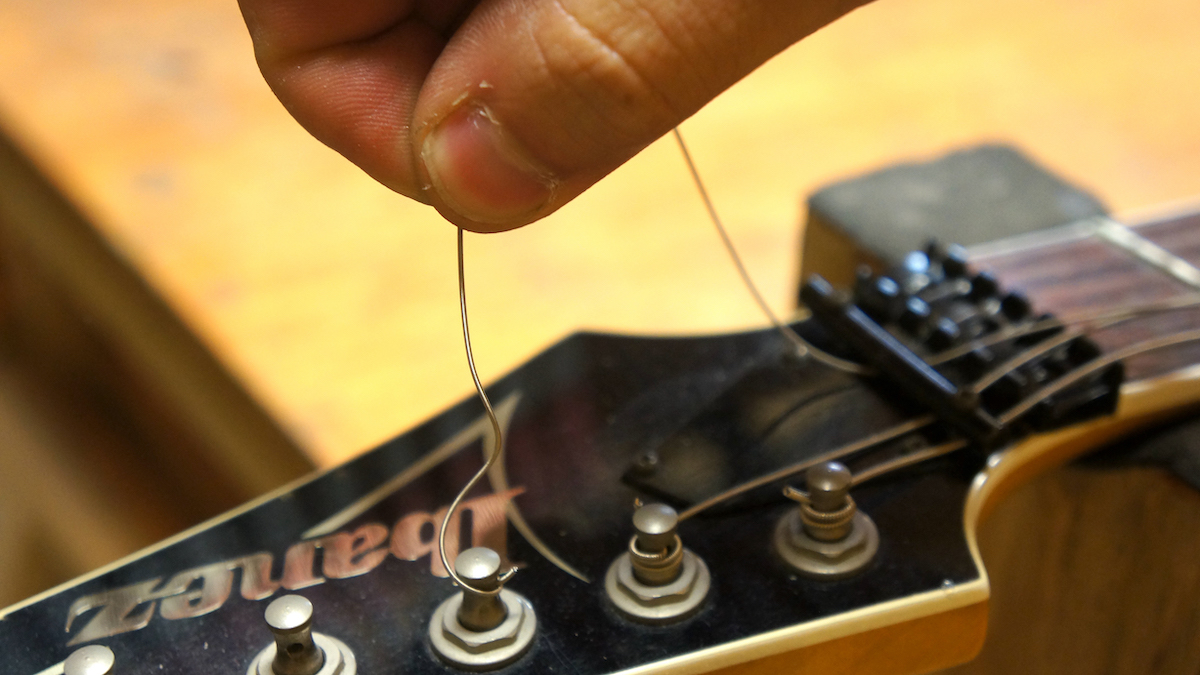
2. Remove the old strings
With the end of the string released from your Floyd Rose you can now unwind the string from the tuners/machine heads, watch out for accidentally pronging your fingers on the sharp ends of the strings. We'd recommend using pliers.
For non-Floyd guitars where you cut the strings, follow the process as above to remove the old strings from the machine heads, then feed the ball end back through the tailpiece or the body of your guitar (this will differ depending on which type of guitar you have).
With your strings removed, now could be a good time to give the body of your guitar and the areas around your bridge and pickups a good clean. A soft paintbrush should dust away most of the unwanted grime.
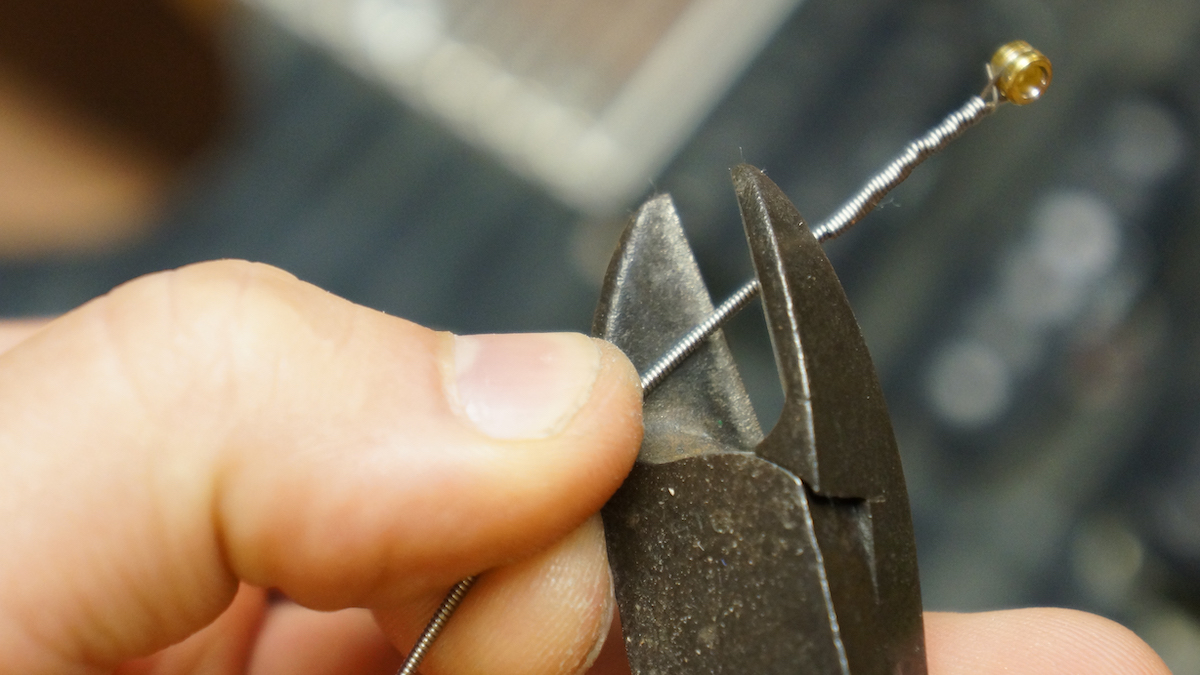
3. Start new string installation
You don’t need the ball end of your new strings for Floyd Rose and similar tremolo systems so in this case you can just snip it off. Poke the newly trimmed string into the saddle and get it in the centre, trap it in there with a reasonable amount of force, but don’t go too crazy.
If you don’t have a Floyd Rose you need to poke the non ball end of each string through the rear of the guitar and up and over the bridge. For Les Paul-style guitars you’ll feed the non ball end through the guitar’s tailpiece. The string will stop pulling through once the ball end meets resistance.
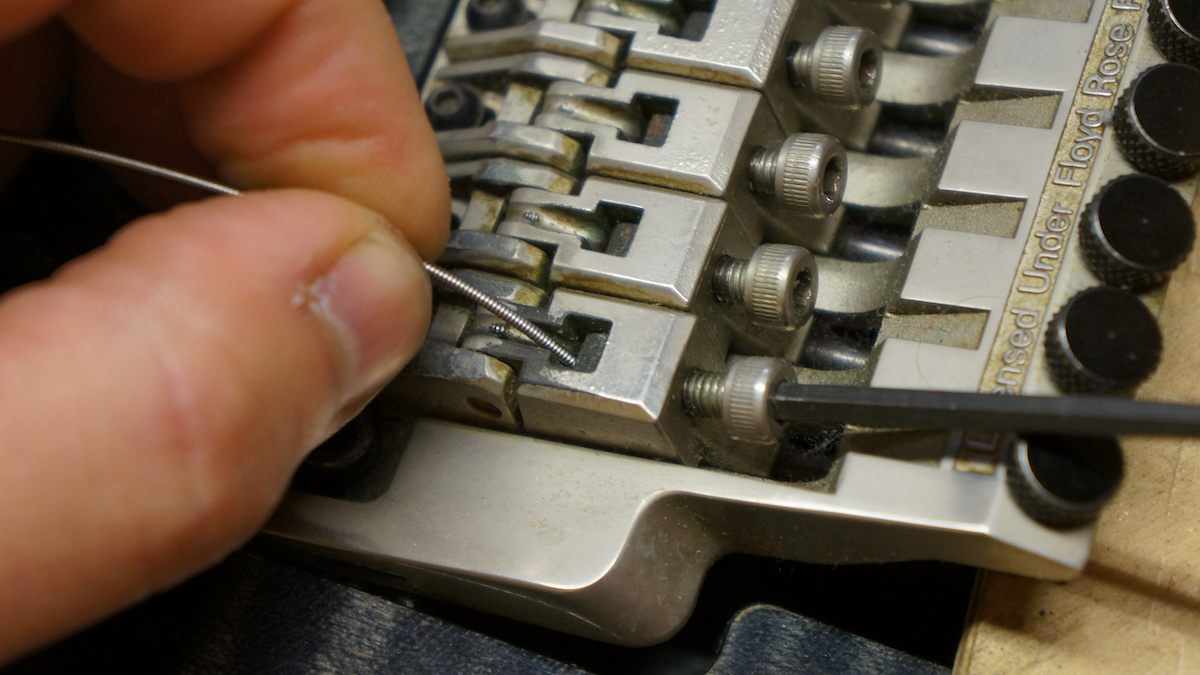
4. Feed the string through the locking nut
Next, feed the string through the locking nut unit, under the string bar retainer and into the corresponding machine head. For guitars without a locking nut, you can feed the string straight into the machine head.
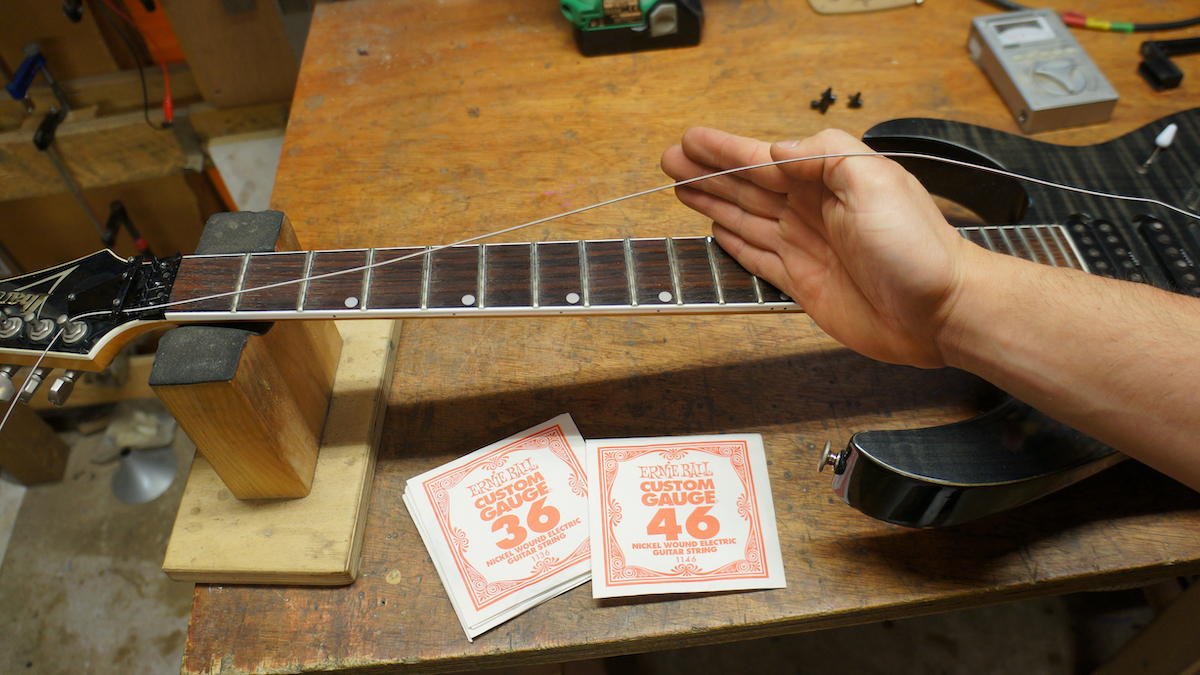
5. Factor in some slack on each string
It’s time for our famous Karate chop; this helps dial in the same amount of slack at each string, and ensures you have the same amount of winds around the tuner when it comes to tightening the string. Yes on some guitars there is a locking nut, but this is good practice for all instruments. With the right amount of slack, now it’s time to secure the string ready for tightening. Feed the tail of the string back around the tuner and tuck it underneath the same string. Pull the tail tight and upwards, this will create a kink in the string that will help hold it in place.
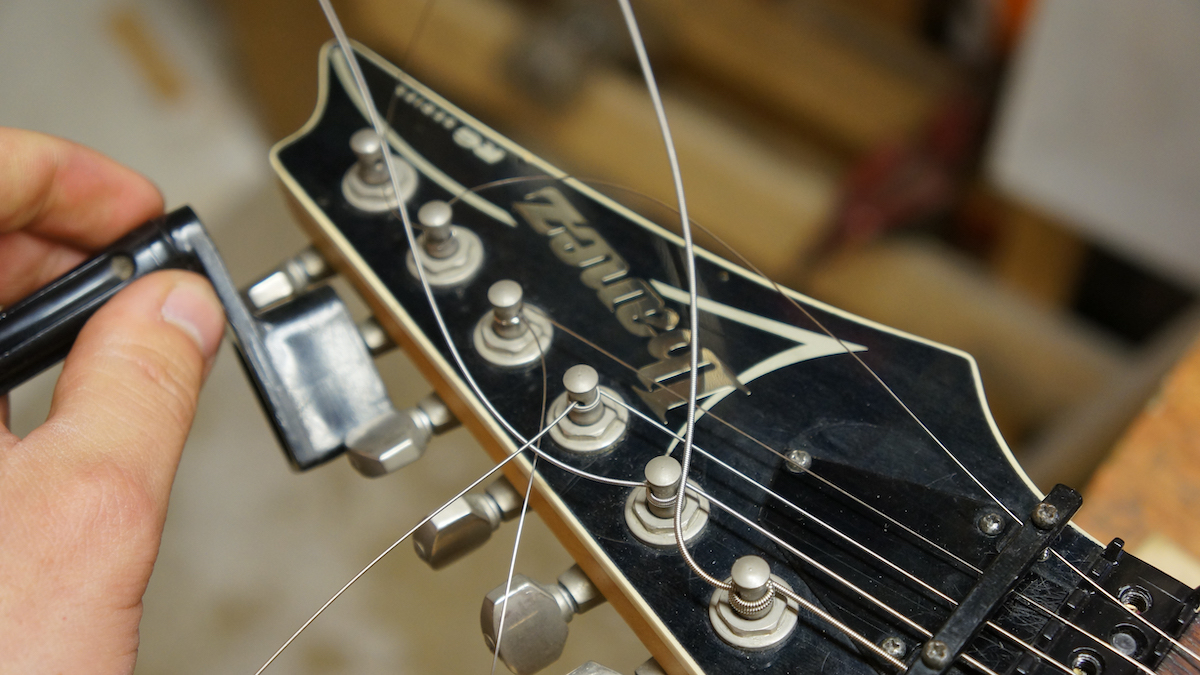
6. Wind your strings on
Wind on all strings – using a string winder for speed – and you should see the same amount of wraps on each tuner. If you don't have a locking nut you will need to ensure the each string is seated in the correct groove f the guitar's nut.
Before you tune the guitar, if you have a trem it's important to take the time to reset each fine tuner screw. Positioning each one in the middle of its travel will allow you to raise and drop the pitch of each string nicely with plenty of range.
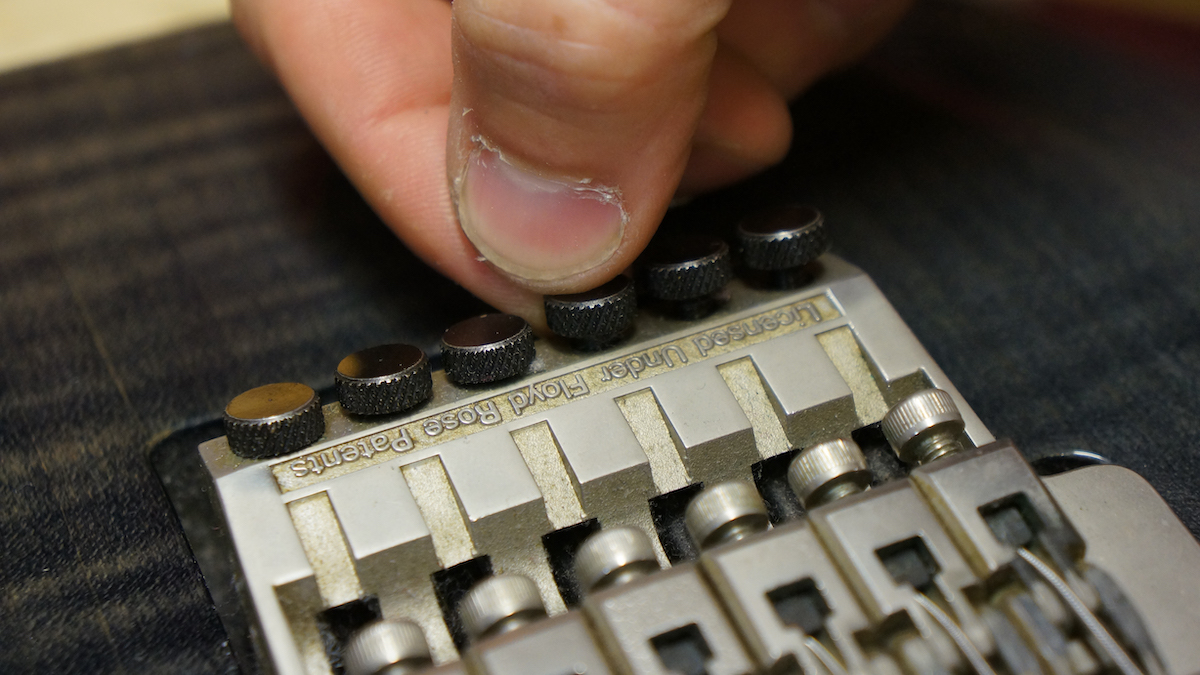
7. Tune up your guitar
If you have a Floyd tremolo this will take a few attempts as the tremolo balances out. Non-trem guitars will be easier to get in tune first go. We highly recommend employing a guitar tuner to get things spot on (even a cheap clip-on tuner will do the trick).

8. Stretch the strings
You’re nearly there! Stretch the strings in one at a time, this tightens the wraps and also tests the clamps at the bridge to show you if you’ve fastened them tightly enough. When one string is stretched, re-tune it before you move on. The aim is to settle the string for greater tuning stability.

9. Trim string tails
Now, trim off the string tails at the machine head before they do you a mischief! For non-trem guitars, you are now ready to rock.
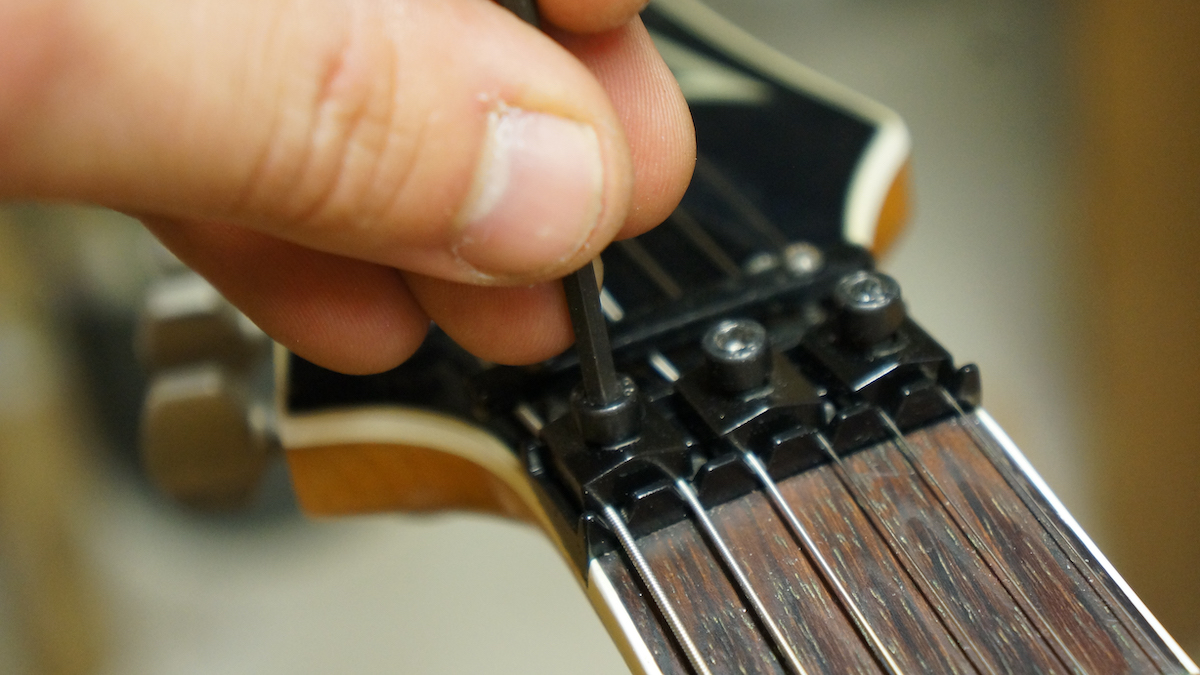
10. Lock up your Floyd Rose
For Floyd Rose guitars you’ll want to re-tighten the locking nut again a respectable amount, but remember it doesn’t need to be crazy tight. Now it's time to shred!
Related buyer’s guides
- How to restring a classical guitar
- Best acoustic guitar strings: top strings for every budget
- Best bass strings: boost tone and feel
- Best flatwound bass strings: choose the right ones for you
Jack runs an independent guitar setup and guitar repair service in Manchester, England. He serves the musicians of the Northwest of England, working on electric guitars, bass guitars, acoustic guitars and more. Jack has been writing the Fix Your Guitar column in Total Guitar Magazine since 2017.
"Upgrading from your entry-level acoustic opens the door to an entirely new world of tonewoods, body shapes, and brands": 6 signs it's time to upgrade from your first acoustic guitar
"I'm past my prime": 5 common excuses for not learning the guitar – and 5 body and mind-boosting reasons you should










